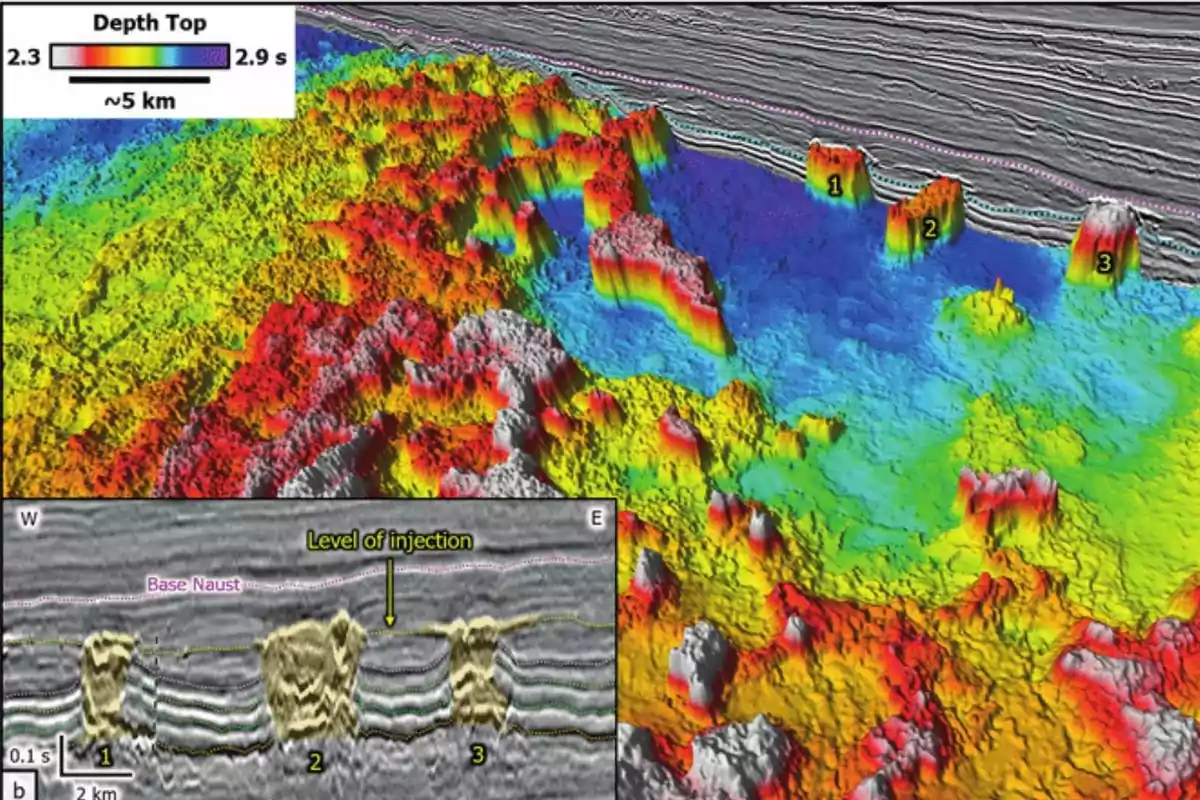
Geologists discover gigantic bodies of sand sunk in the North Sea that no one had ever
Geologists find gigantic bodies of sand sunk into older sediments in the North Sea, defying the classic laws of stratigraphy.
Scientists have identified hundreds of giant sand bodies buried beneath the northern North Sea that appear to have sunk into lighter, older sediments reversing the normal order of rock layers at an unprecedented scale. The finding, based on basin-wide 3D seismic imaging and well data, helps explain long-mysterious mounds up to several hundred meters high and tens of kilometers long, and could change how geologists evaluate underground reservoirs and carbon storage sites.
Why North Sea sinkites matter
Engineers count on reliable seals and predictable fluid pathways when they inject carbon dioxide underground or tap oil and gas. The newly described structures now termed “sinkites” show that, under the right conditions, younger, denser sands can pierce and undercut older, lighter layers. That rearrangement affects where fluids accumulate, how they migrate, and what can leak.
The authors argue that the process adds a new, large-scale gravitational mechanism to geology, one relevant to both petroleum systems and future carbon storage projects in the North Sea.
How stratigraphic inversion forms sinkites
The team combined modern, high-resolution 3D seismic data with petrophysical logs and cuttings from hundreds of wells to trace the anatomy of the mounds. Their model points to a buoyancy-driven inversion: earthquake-triggered or pressure-induced liquefaction turned overlying basin-floor sands into a dense slurry. That slurry descended through natural fractures and dislodged rigid rafts of low-density, fossil-rich “ooze,” flipping the order of layers similar to a Rayleigh–Taylor instability, when a heavier fluid sinks through a lighter one. The sand bodies that sank are the “sinkites”; the lighter rafts that rose are dubbed “floatites.”
The work clarifies why the mounds consistently sit within a mid-Oligocene to mid-Miocene ooze interval and are complemented above by younger, sand-rich packages laid down in the Late Miocene to Pliocene timing that matches when the inversion likely occurred. In plain terms, the older ooze provided the light, brittle layer; the younger sands provided the weight and mobility.
Scale of North Sea sinkites
The structures are not small. The paper documents kilometer-scale mounds some several hundred meters (over 650 feet) high and tens of kilometers (more than six miles) long embedded in fine-grained strata about 1,000 meters (roughly 3,300 feet) below the seafloor. Earlier ideas for these features ranged from mud diapirs to upward-injected sandstone, but none fit all observations. By tying seismic geomorphology to well logs and mineral fingerprints, the authors conclude that dense sand moved downward, not up, “violating the law of superposition,” the basic rule that younger rocks usually sit on top of older ones.
“This discovery reveals a geological process we haven’t seen before on this scale,” said Mads Huuse, a professor at The University of Manchester.
What’s next for carbon storage
The team is now cataloging additional examples and exploring how the inversion influences reservoir continuity, seals, and fluid escape pathways key questions for siting and monitoring carbon storage. Because sinkites and floatites reorganize the subsurface in three dimensions, the same structures that look like traps on older, lower-resolution surveys may behave differently when reinterpreted with modern seismic and well constraints.
Uncertainties and validation beyond the North Sea
Not everyone will be convinced immediately. The mechanism’s triggers and regional extent, and how often it remodels sealing units, will need testing beyond the North Sea with core data, geomechanical modeling, and targeted stratigraphic dating. “Time and yet more research will tell just how widely applicable the model is,” Huuse said.
The study is published in Communications Earth & Environment.
More posts: